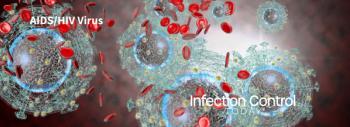
Imaging Reveals New Details of Cannibalistic Bacteria
A colony of Bacillus subtilis (right) inhibits growth of human pathogen S. epidermus.
Researchers at the University of California, San Diego (UCSD)Â have revealed new details about how cannibalistic bacteria identify peers suitable for consumption. The work, which employed imaging mass spectrometry, is a first step toward a broader effort to map all signaling molecules between organisms.
These are the molecules that control biology, said Pieter C. Dorrestein, PhD, associate professor at UC San Diegos Skaggs School of Pharmacy and Pharmaceutical Sciences and corresponding author of a paper published this week in the online edition of the Proceedings of the National Academy of Sciences.
Bacterial cannibalism occurs when a subpopulation of a microbial colony eats another subpopulation, harvesting the latters nutrients to sustain growth in times when external food sources are limited. The phenomenon is well-known, but not well-characterized. For example, researchers have not known exactly how microbes identify, select and kill their genetically identical siblings.
Dorrestein, with colleagues at UC San Diego and in Iowa and Texas, studied Bacillus subtilis, a common species with a complex life cycle that thrives in diverse living conditions, from soil to contaminated wounds to the intestinal tract. Using imaging mass spectrometry, the researchers generated spatial distributions or chemical maps of molecules within the microbe, focusing in particular on two metabolites called sporulation delaying protein (SDP) and sporulation killing factor (SKF), which the scientists correctly hypothesized were directly involved in the cannibalistic process.
These are the first fully characterized molecules that enable B. subtilis to digest or differentiate genetically identical cells, said Dorrestein. Our work also shows that the molecules the bacteria uses to differentiate themselves are akin to those of a multicellular organism, even though the microbes are genetically identical. Most people do not think of a microbial colony as a differentially organized multicellular organism.
Since SDP and SKF were involved in killing bacteria, the scientists also explored whether the molecules might be effective weapons against human pathogens. Their findings were mixed. SKF had no effect on targeted pathogens like Pseudomonas aeruginosa or Klebsiella pneumonia, but SDP displayed potent inhibitory activity against two variants of Staphylococcus aureus and other pathogens. Dorrestein said SDP itself has limited potential as an antibacterial agent, but it could serve as an antibiotic lead compound where the active portion can be modified to meet the requirements of a therapeutic agent. It further shows that imaging mass spectrometry can be used to discover biologically active molecules.
He said additional antibacterial molecules are likely to be found in other cannibalistic species, but they remain to be identified and described.
Co-authors with Dorrestein are Wei-Ting Liu, Jane Y. Yang and David Gonzalez of the Department of Chemistry and Biochemistry at UCSD; Yu-Liang Yang and Yuquan Xu of UCSDs Skaggs School of Pharmacy and Pharmaceutical Sciences; Anne Lamsa of the Division of Biological Sciences at UCSD; Nina M. Haste of the Center for Marine Biotechnology and Biomedicine and the Skaggs School of Pharmacy and Pharmaceutical Sciences; Julio Ng of the Department of Computer Science at UCSD; Craig D. Ellermeier of the Department of Microbiology, University of Iowa; Paul D. Straight of the Department of Biochemistry and Biophysics at Texas A&M University; Pavel A. Pevzner of UCSDs Department of Computer Science and the National Center for Research Resources Center for Computational Mass Spectrometry; Joe Pogliano of UCSDs Division of Biological Sciences; Victor Nizet of the Skaggs School of Pharmacy and Pharmaceutical Science, Center for Marine Biotechnology and Biomedicine and Department of Pediatrics, UC San Diego; and Kit Pogliano, UCSD Division of Biological Sciences.
Â
Newsletter
Stay prepared and protected with Infection Control Today's newsletter, delivering essential updates, best practices, and expert insights for infection preventionists.






